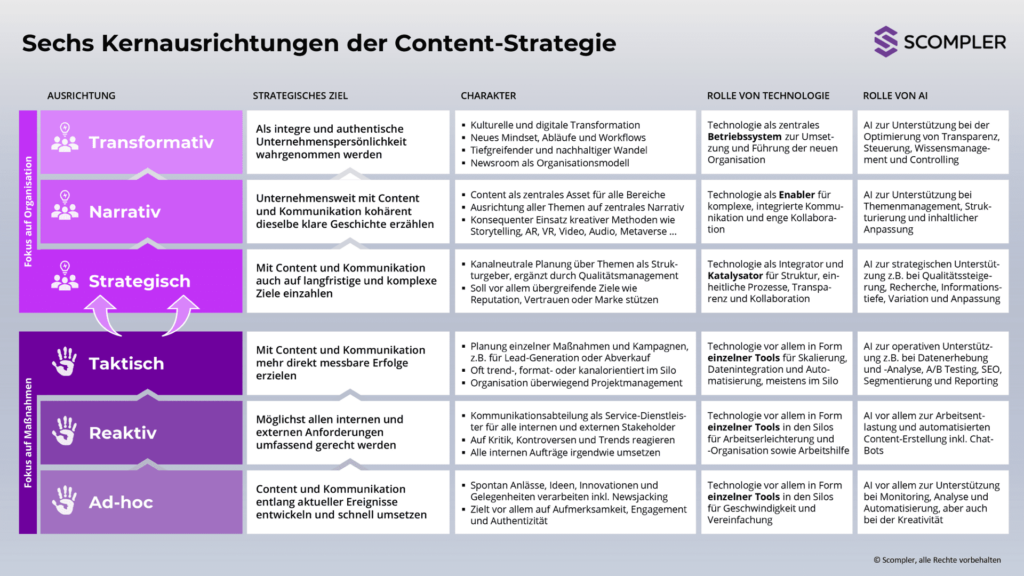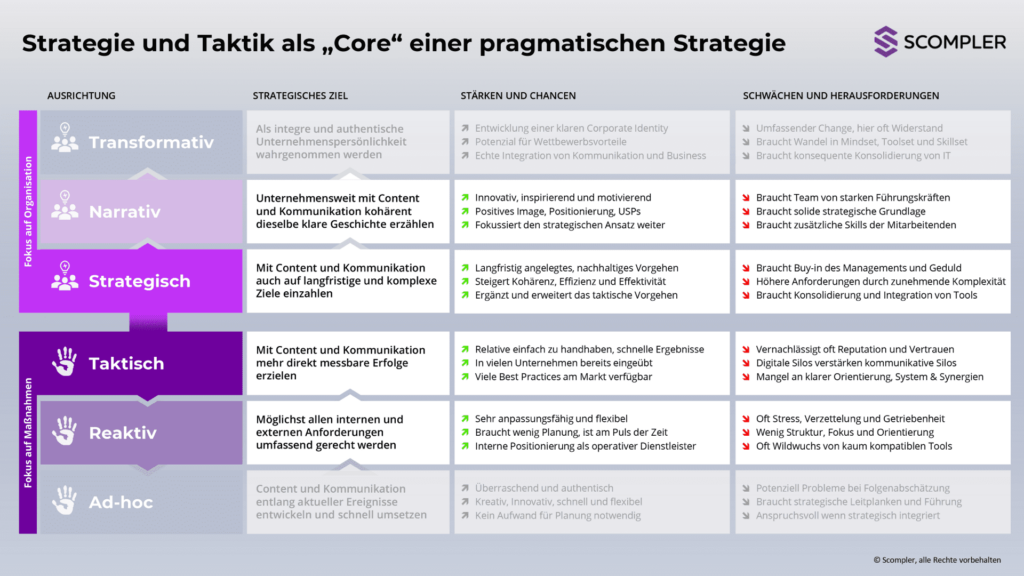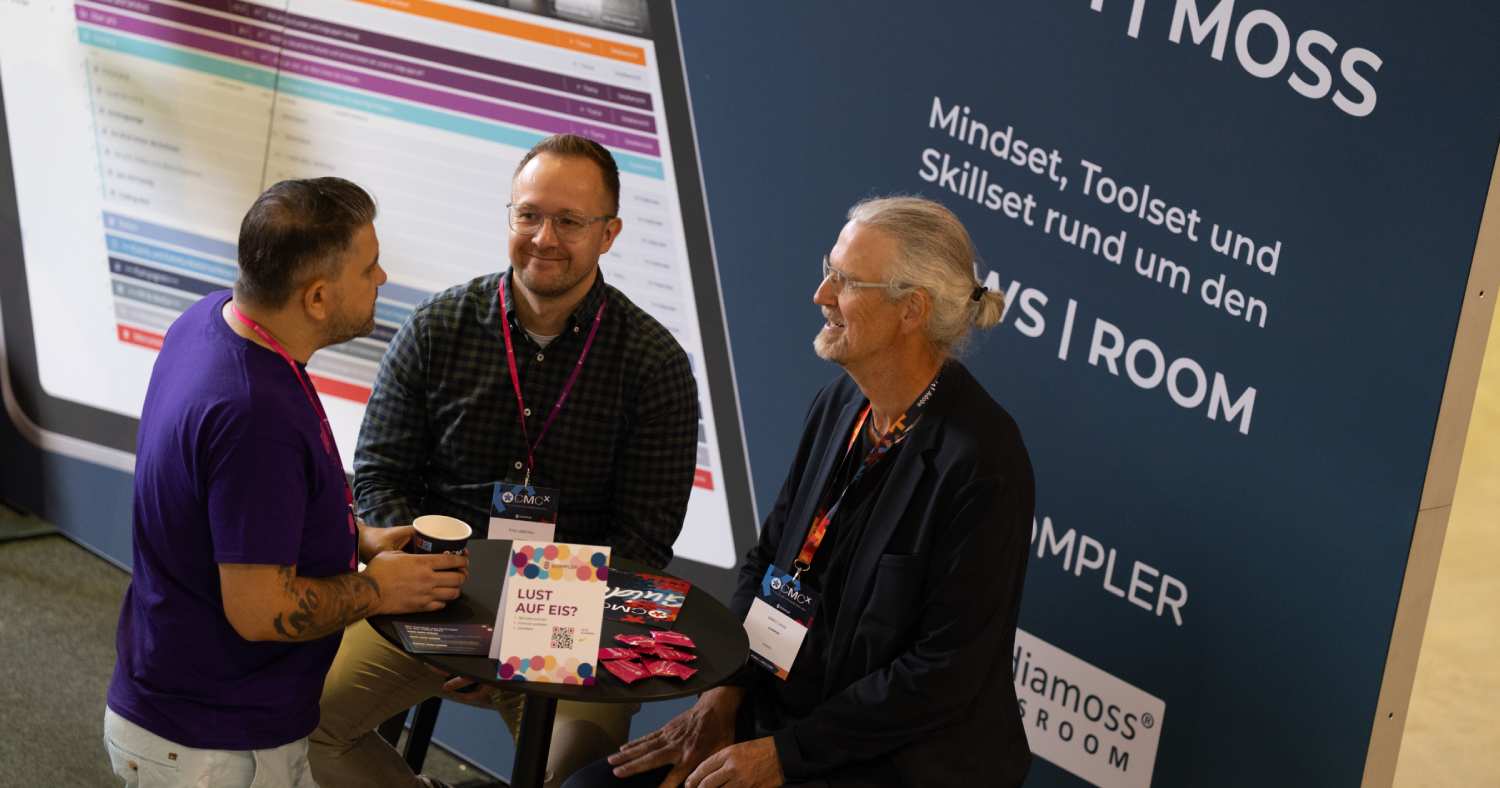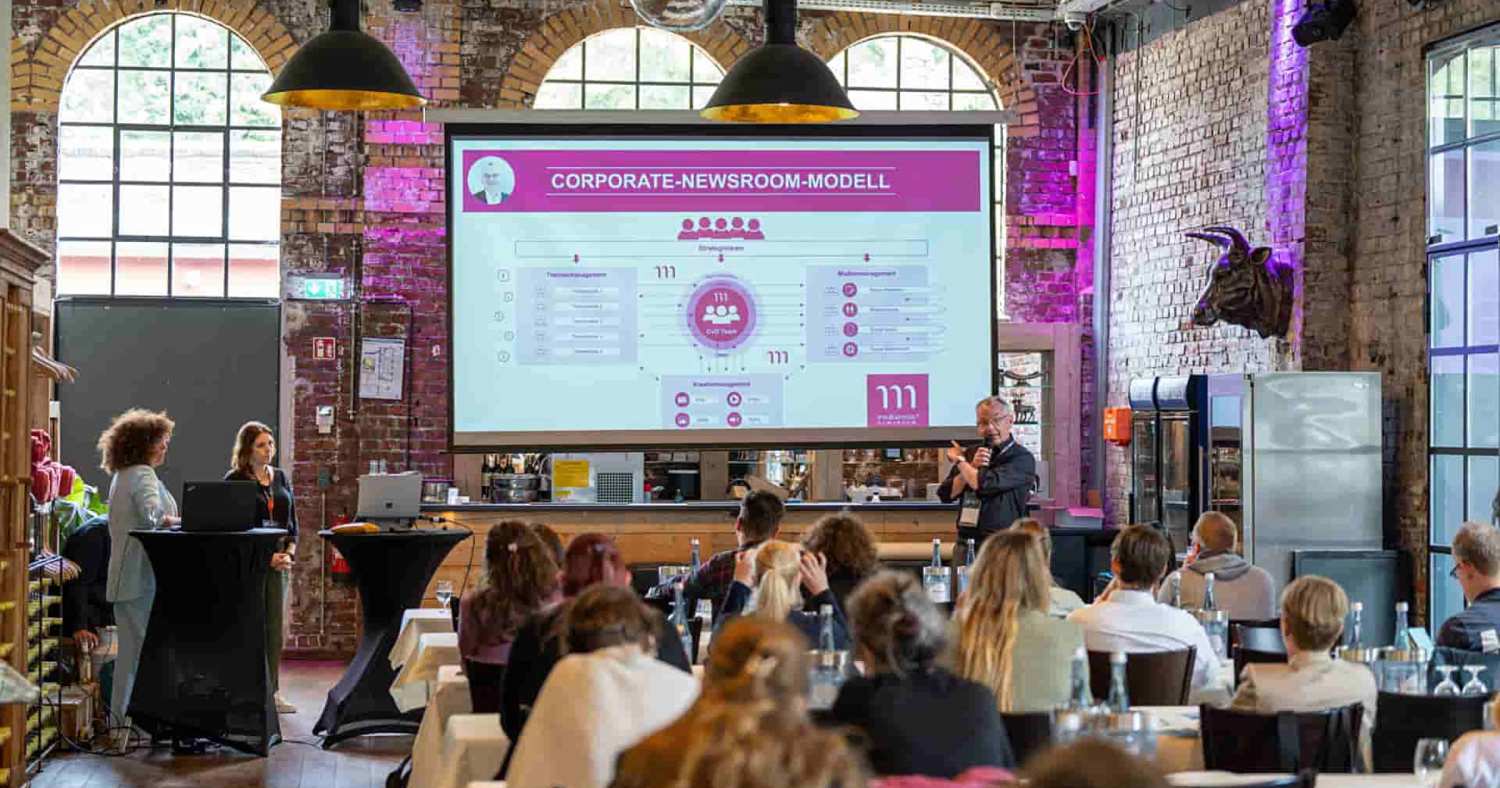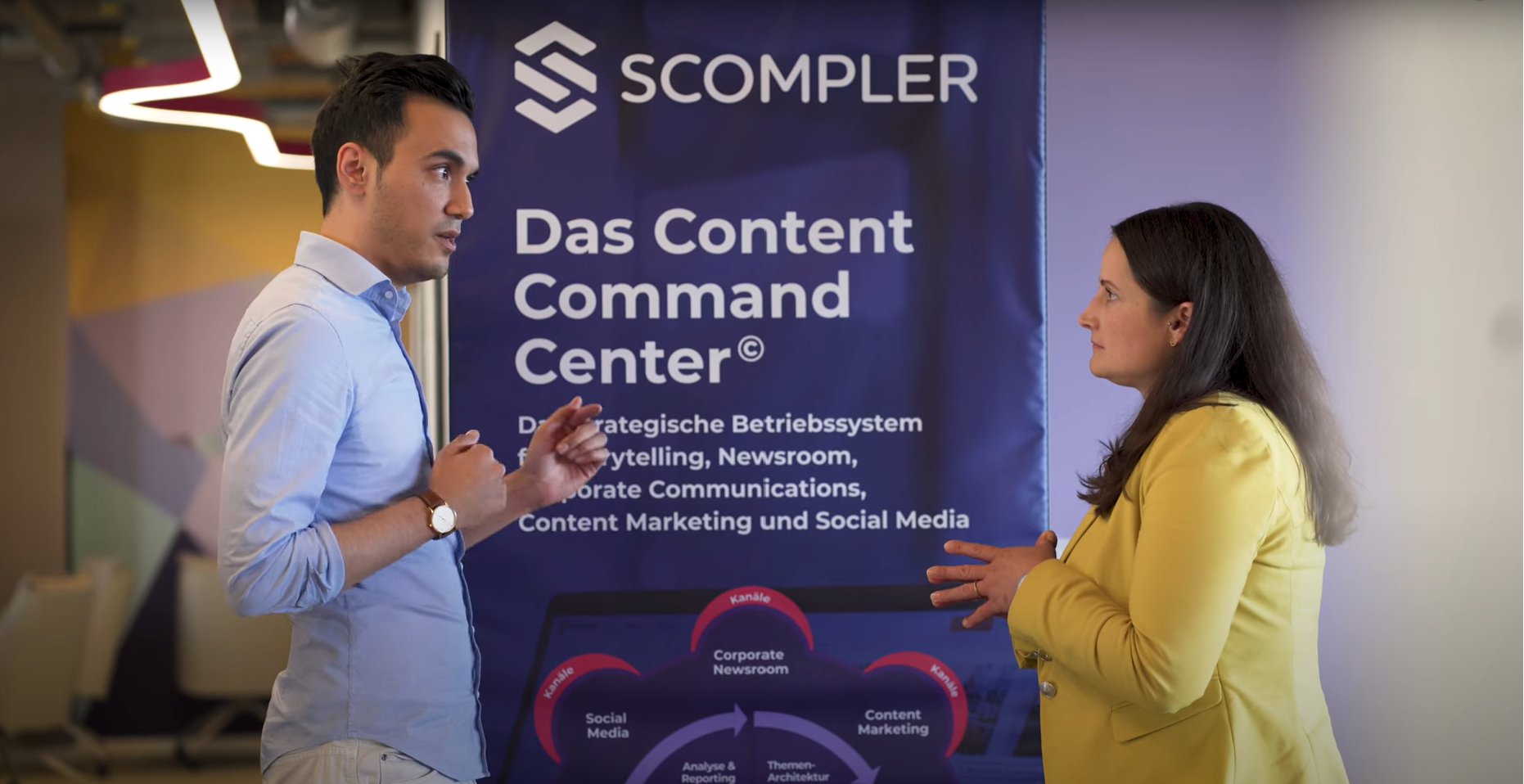CMO Content Strategy
AI and content strategy: a blessing and a curse for marketing
Nowadays it is easy to write an article about AI and content strategy. You go to ChatGPT and formulate a prompt: "Write an article about AI and content strategy". And in a few seconds you have it. The result is useful and tends to be better than many of the texts you can read in some newsletters. And you can basically continue in the same way when implementing the strategy. AI does that! But wait a minute...
We are on the threshold of the industrialization of content production: yes, thanks to AI, anyone can produce content easily, indefinitely and at the lowest possible cost in usable quality. What sounds good at first only harbors one danger: content will become a commodity, a largely interchangeable everyday good that is available everywhere in good quality, in unlimited quantities and with no effort at all. Just like toilet paper. Technology now offers paper in addition to the toilet walls. Where this commodity comes from no longer matters to the consumer; it's "just toilet paper". The question is what benefit content still has for the creator. Is content marketing degenerating into an imitation of communication that ends up just clogging up channels with "stuff"?
The question of the "why"
Despite all the dangers, content remains indispensable. Communication without content is like a car without gasoline. When we talk about "content", as opposed to advertising, we mean useful communication that satisfies the need for knowledge, orientation, confirmation or entertainment. CMOs know that content is at the heart of every successful communication and marketing strategy. Without content, they would not be able to send out a newsletter, implement an SEO strategy, do any press work or post anything on social media. Content is also essential in other areas, such as internal communication, corporate communication, sales and support.
And that is why the author of this text has decided to rethink the concept of "content strategy". Namely around the following thesis: Before a company thinks about a content strategy in the narrower sense, it should first think about a fundamental question, namely the question of "why" it needs or wants to use a content strategy. So what is the core strategy? It is about individual meaning: What does it really mean for the company, the CMO, for the employees and for the target groups if the company chooses one approach or the other? What is the actual purpose? Only once this has been clarified can you think about the content strategy in the narrower sense, how to implement it and also how to use technology, including AI, in a meaningful way.
We have identified six different core orientations: Ad-hoc, reactive, tactical, strategic, narrative and transformative. They all differ primarily in the degree and complexity of planning and management. An ad hoc approach requires virtually no planning. It is purely about execution and distribution. A transformative approach, on the other hand, requires a great deal of planning and a great deal of management, but it is also much more efficient.
Ad-hoc: The ad-hoc orientation of a content strategy aims to develop and quickly implement content and communication in line with current events. A good example of this is SIXT. The idea is to process current events, news, innovations and opportunities. Above all, this will enable you to generate attention, reach and engagement. It's about being the first to pick up on a potential hype topic. Martech's role here is primarily to work faster and easier. AI supports monitoring, analysis and automation, but can also help with creativity. But AI will rarely create the content (alone). The strengths and opportunities of this approach lie in surprise and authenticity. It enables a creative, innovative, fast and flexible approach. Since no great effort is required for planning, it is possible to react quickly to current circumstances. The challenge, however, is to deal with potential problems when assessing the consequences. It is therefore important to develop strategic guidelines and leadership to ensure that the ad hoc approach is integrated into the overall strategy.
Reactive: The aim of a reactive content strategy is to comprehensively meet all internal and external requirements. In this approach, the communications department acts as a service provider for internal and external stakeholders. The focus is on satisfying all internal stakeholders, from specialist departments to managers, and responding directly to external criticism, controversies and trends. Various tools are used here to facilitate the organization of work. AI is primarily used to reduce the workload, automate repetitive tasks and generate content. It makes perfect sense to let AI do the whole job. Chat bots are an example of this, used to answer customer queries quickly and efficiently. The strengths and opportunities of this approach lie in its adaptability and flexibility. However, the high pressure to react leads to stress, procrastination and a sense of being driven. There is a lack of structure, focus and orientation, as priorities are often determined by rapidly changing requirements. There is also a risk of a proliferation of barely compatible tools. The digital silos then often make collaboration with other departments difficult. Nevertheless, this is the approach that is probably the most common in most companies.
Strategic: The strategic approach differs from the tactical approach primarily in that the objectives are more complex. Reputation, trust, brand building, thought leadership or top-of-mindness cannot be achieved through individual campaigns. Much more integrated communication is required here, both in terms of channels and tools as well as target groups. The character of the strategic orientation consists of channel-neutral planning via topics as a structure provider, supplemented by quality management. The strategic approach is very similar to the newsroom model: the communication disciplines are networked, synergies are created and work is coordinated. Common topics are at the heart of this. The role of technology in the strategic orientation lies in its function as an integrator and catalyst for structure, standardized processes, transparency and collaboration. AI plays a strategic support role in this alignment. For example, it can help with quality improvement, research, information abundance, variation and adaptation. The strengths and opportunities of this approach lie in its long-term and sustainable approach. It increases the coherence, efficiency and effectiveness of communication. However, it requires management buy-in and patience, as the strategic approach takes time to take effect. This approach is not yet so widespread, but is currently experiencing a real trend.
Tactical: The tactical orientation of a content strategy aims to achieve directly measurable success. It consists of planning individual measures and campaigns. Concepts for a tactical approach are often called "strategy", but if you take a closer look, they are not strategies, but tactics. In contrast to tactics, strategy is aimed at more complex goals that can only be achieved through the interaction of many measures and over a long period of time. Instead, the goals of a tactical approach are usually short-term, for example to boost sales of a new product, generate leads, increase engagement on a channel or generate attention for a brand. Technology is primarily used in the form of individual tools to enable scaling, data integration and automation. AI plays an operational support role. For example, it can be used for data collection and analysis, A/B testing, SEO, segmentation and reporting. The strengths and opportunities of tactical alignment lie in its relative simplicity and the ability to achieve quick results. It is already established in many companies and there are many best practices available on the market. However, this approach neglects long-term issues such as reputation and trust, and the company's development is limited. In addition to the reactive approach, almost all companies are likely to have tactical elements in their core strategy.
Narrative: The narrative orientation of a content strategy pursues the strategic goal of telling a coherent, clear story throughout the company with content and communication. "Narrative" as an adjective here refers to the use of stories and narrative elements to create an emotional connection with the audience. The character of this approach lies in viewing content as the central asset for all areas. All topics are aligned with a central narrative. The aim is to consistently use creative methods such as storytelling, augmented reality (AR), virtual reality (VR), video, audio, metaverse and much more. The role of technology is to enable complex, integrated communication and close collaboration. It serves as an enabler for the implementation of the narrative approach. AI plays a supporting role in this approach. It can help with topic management, structuring and content adaptation. The strengths and opportunities of the narrative approach lie in its innovative power, inspiration and motivation. It enables a positive image, clear positioning and highlights the unique selling propositions (USPs). It also further sharpens the strategic approach. However, it requires a team of strong leaders who can drive the narrative strategy forward. A solid strategic foundation is also important. This approach is considered innovative and is likely to play an increasingly important role in the future.
Transformative: The transformative orientation of a content strategy ultimately has the strategic goal of integrating communication deeply into processes and being perceived as a company personality with integrity and authenticity. This approach is characterized by cultural and digital transformation, which leads to a new mindset, processes and workflows. It is about a profound and sustainable change in which the newsroom serves as an organizational model. The role of technology in this direction is to support the implementation and management of the new organization as a central operating system. AI plays an important role in supporting this direction. It can optimize transparency, steering, knowledge management and controlling. The strengths and opportunities of narrative alignment lie in the development of a clear corporate identity. It offers potential for competitive advantages and enables genuine integration of communication and business. However, the comprehensive change can easily meet with resistance from employees. A change is required in all areas, in the mindset, toolset and skillset. In addition, a consistent consolidation of IT is necessary to ensure the effective implementation of strategic goals.
It's all about the mix
Which of these core strategies you choose depends on a whole series of questions that you can only answer for yourself. There is no objective "better" or "worse" here. There is only a better or worse "suitable for you". And that depends on what resources you have, especially how strong your team is and in particular the managers in your team. In practice, your core strategy is likely to be a mixture of several or even all elements. The core should be a solid tactical approach that you increasingly align strategically. You should also include and plan for unforeseen events, but the aim must be to reduce the unforeseen. If you also create the freedom to react ad-hoc and impulsively to a large extent, and therefore authentically and humanely, then you have already done a great job. However, you should also think about the narrative and transformative approaches. The narrative approach in particular offers many opportunities to gain a competitive edge and create an emotional bond. And you will have to deal with transformation anyway. Communication is currently undergoing massive change. And you will have to adapt to these changes. As the saying goes? "Fate leads the clever, but drags the stupid along."
And how do you deal with the topic of AI?
And to take us back to the introduction (and the headline): The best way to deal with "AI" depends above all on how you define your core strategy. It also depends on whether you understand "AI" as "artificial intelligence" or as "augmented intelligence". In other words, whether you delegate "intelligence" to AI or whether you see AI as supporting your own intelligence. Depending on how you understand this, the use of AI in your content strategy will also change. Of course, building a fully automated content machine is an option. If you flood the markets with your content, you will certainly gain more visibility and, if implemented well, attention. Commodity products can also be successful. The alternative is to focus on creativity and use AI to become better than the competition. True to the motto "Think better, not more".
But what exactly that looks like will be the subject of a separate article. The topic is too extensive for that.
